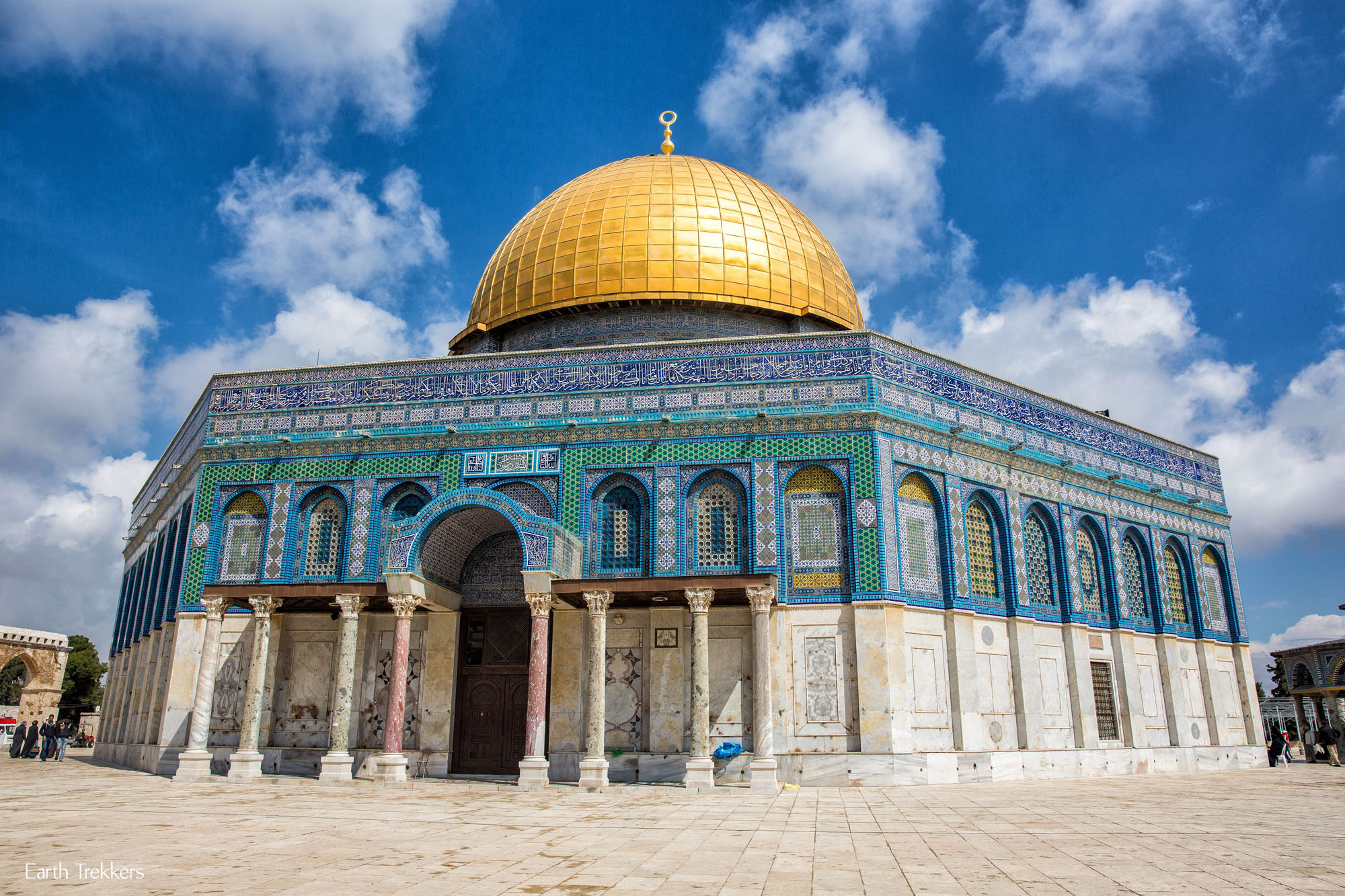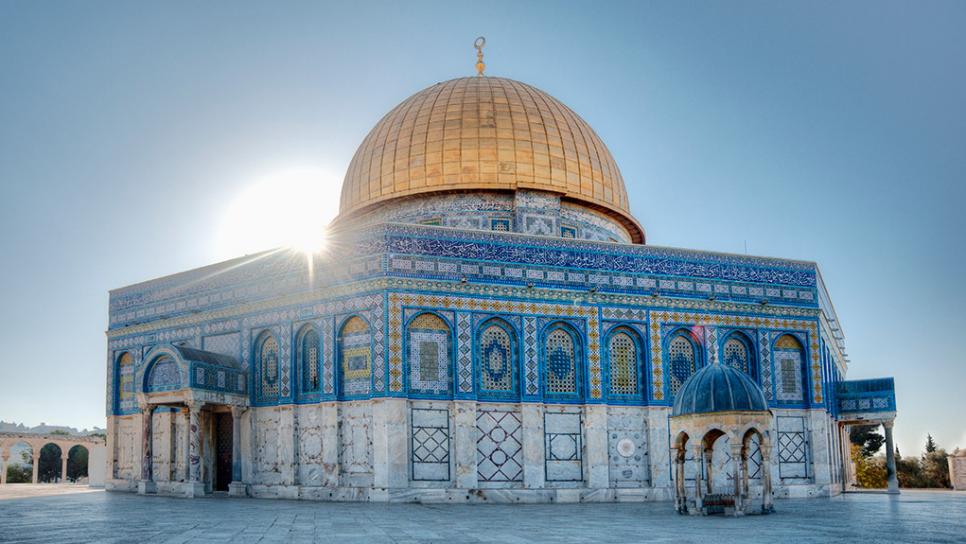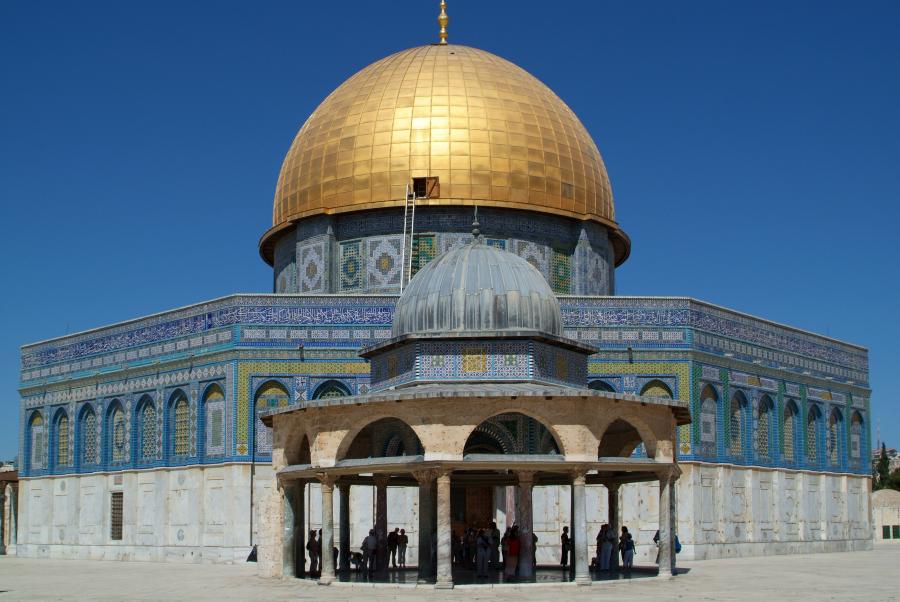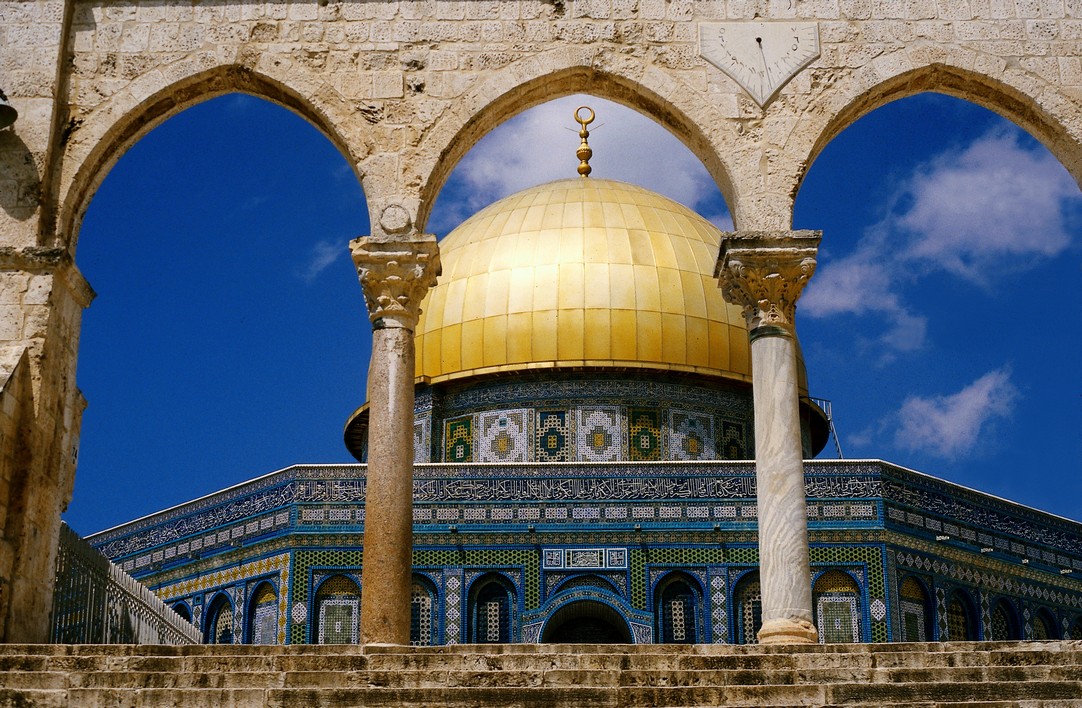Qubbat As-Sakhrah or the Dome of the Rock is one of the masterpieces of Islamic architecture. This building is one of the earliest Islamic architectural monuments that survive in its original form and is the third holiest site for Muslims, after Mecca and Medina.
Built between 687-691 by the Umayyad Caliph Abdul Malik bin Marwan, who reigned during the period 685 – 705. Situated in the middle in the compound wall of Al-Haram ash-Sharif (noble shrine) located within the walls of the old city of Jerusalem (East Jerusalem). It was believed by Muslims as the point of departure of the Prophet Muhammad in the event of Ascension, night journey to heaven.
The name “Dome of the Rock” itself adjusted to the place of establishment of the building. In the Thematic Encyclopedia of the Islamic World: Thought and Civilization explained that the building of the Dome of the Rock is precisely founded upon (the mountain) rock or coral. In this rock there are footprints of Prophet Muhammad SAW.
The place was also called Mount Moriah, which is believed to Jews, Christians and some Muslims as a prophet Abraham prepared himself to sacrifice his son Isaac AS. Elsewhere the same name is the Temple Mount, which is recognized as the temple of Solomon AS. There, Jewish temples once stood, until its collapse in the year 70 AD.
Within the complex of Al-Haram ash-Sharif, in addition to the Dome of the Rock, there are two other buildings, the Dome of the Chain (Qubbet as-Silsilah) and al-Masjid al-Aqsa. The dome of the Chain is a smaller building in the east of the Dome of the Rock.
Basically the Dome of the Rock is not a building that represents the culture of Islam, despite the fact that this building was founded by the Muslims or at least on the order of the Muslims, and has a function associated with the Islamic conquest over his enemies. The dome of the Rock is actually a monument to the victory.
The Dome of the Rock looks different from the mosque, both in its form and in its purpose. Monumental buildings for the Muslim community, has a design and architectural style that is not too typical of buildings of worship of Muslims. Overall, the building is actually based on models of pre-Islam. Therefore, the design of the Dome of the Rock mimics the type of converged (focused on a center) which is used in places where baptisms and church buildings.
The design of the Dome of the Rock is very bases of geometric calculations, especially in determining the shape and the points on the building plans. The schematics are octagonal shape, in contrast to the principle of the mosque building. This sketch causes the direction of Qibla become blurred.
The octagonal shape with a real intended as a symbol of power. In this case, a roundabout surrounded by an octagon in another octagon. This is a simple geometric pattern that can be made from a placement of squares on the other squares by rotating it 45 degrees. The columns of the same form as much as sixteen alongside the pilasters at each corner seemed to support the roof circumference. Such a pattern is common in the works of Byzantine architecture.
Byzantine style can also be witnessed in the design of the Dome of the Rock in. In the monumental building there are many mosaics that show a mix of Sasanid and Byzantine motives that are characteristic of early Islamic art. The interior was decorated lavishly with a wide range of colors and materials on the ornament. The materials used in the ornaments of the Dome of the Rock, among others, marble, mosaics, ceramics, and a layer of gold.
The Dome of the Rock has undergone several improvements in its long history. One of the most important improvements made in the 16th century AD during the reign of Sultan Sulaiman (1520-1566). The repairs were carried out by covering the outside of the building with glass coated ceramic tiles that cover the previous mosaic. The ceramic tile is a pioneer of Iznik tiles that to be important characteristics of Ottoman architecture.
The tiles that cover the building now, was added in 1968. At the same time, the Dome of the Rock is coated with gold for the first time. The current gold layer was made in 1993.











